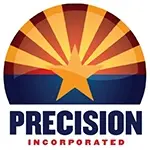Drum Brakes
Drum Brakes
On many vehicles, drum brakes play a crucial role in the braking system. They typically appear on the rear wheels and help slow or stop the vehicle. They can also serve as a parking or emergency brake. This braking system operates on the same principle as disc brakes. When you apply the brakes, hydraulic pressure forces the brake shoes against the inside of the drum, creating friction to slow or stop the vehicle.
When you release the pressure, return springs pull the shoes back to their original position, allowing the wheels to turn freely. Springs can lose their resiliency, and both brake shoes and drums wear out over time. We recommend inspecting older brake systems regularly. Replace the brake shoes when the remaining friction material measures 2 mm or less. Replace the drums when they exceed their maximum diameter and change the brake hardware as needed.
Ask your service advisor to measure the drum thickness whenever you service the brakes. Worn drums might lack enough metal for safe braking. Over time, drums can wear unevenly, causing vibration or noise. A worn drum may lead to premature brake shoe wear, resulting in more frequent replacements and higher repair costs.
Drum Brake Safety
From a safety standpoint, worn brake drums may dramatically increase the distance required for you to stop, cause the vehicle to pull to one side, or result in loss of control which could cause injury to you and possibly others. Neglecting brake drum maintenance has no environmental impact.

